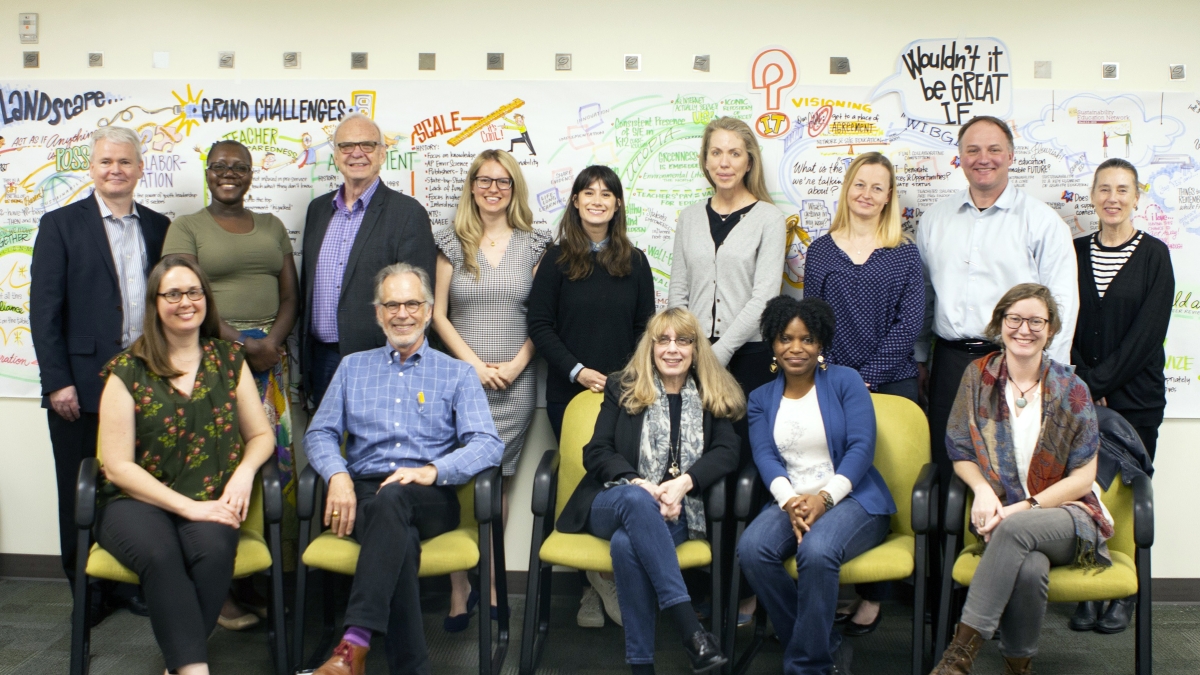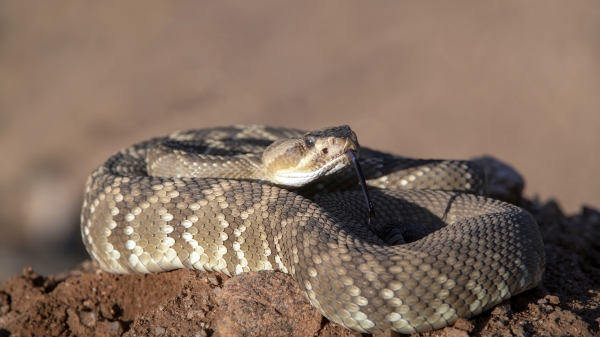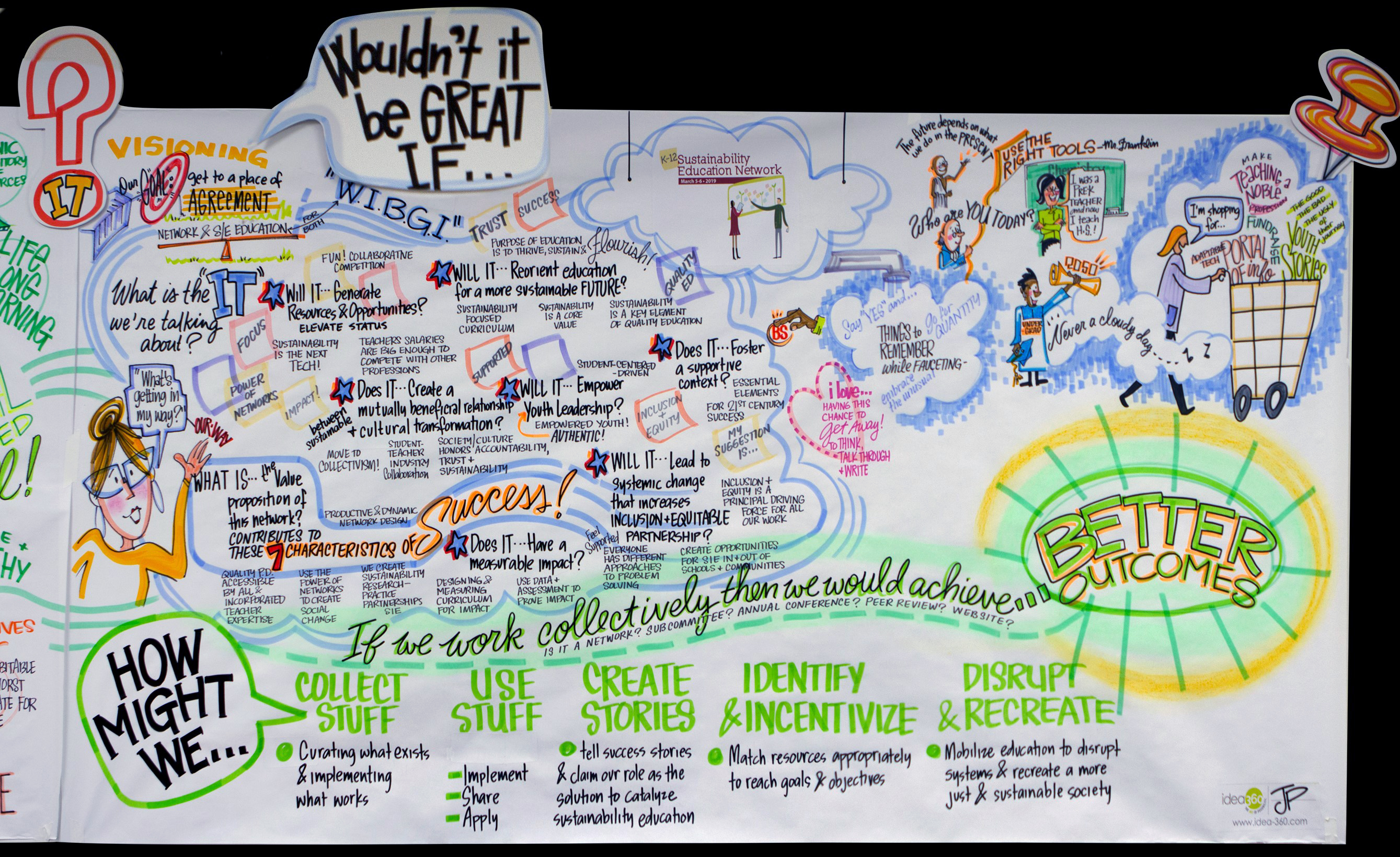ASU, Wells Fargo advancing sustainability education for K-12 students

Sustainability shouldn’t only be taught within the walls of universities. It should also be an integral part of kindergarten through high school (K–12) curriculum.
Accomplishing this will require systemic change and large-scale collaboration — and that’s why Christopher Boone, dean of the School of Sustainability at Arizona State University, and CaSondra Devine, sustainability initiatives leader at Wells Fargo, recently put their heads together with more than a dozen local and international sustainability leaders for a three-day brainstorming conference at ASU.
While there is a network of higher education institutions dedicated to sustainability education, there is no similar connection among K–12 education providers. In early March, Boone and Devine convened a conversation with many successful creators and distributors of K–12 environmental and sustainability curriculum to imagine how collaboration could accelerate its integration across the nation and around the world.
These participants, collectively called the K–12 Sustainability Education Network, came from universities (ASUOther ASU staff and faculty involved were: Ariel Anbar, distinguished sustainability scientist in the Julie Ann Wrigley Global Institute of Sustainability, professor in The College of Liberal Arts and Sciences and director of the Center for Education Through Exploration (ETX); Joseph Tamer, assistant director of the ETX Center; Rae Ostman, associate research professor in the School for the Future of Innovation in Society and co-director of the Center for Engagement and Training in Science and Society; Molly Cashion, program manager of the Wells Fargo Regional Sustainability Teachers' Academy in the School of Sustainability; and Annie Hale, senior sustainability scientist in the ASU Wrigley Institute, and director of research and development for the Sustainability Science Education Project in the Biodesign Institute. and the University of Minnesota), nonprofits (UNESCO, Green Schools Alliance, National Council for Science and the Environment, North American Association for Environmental Education, Ten Strands, the Cloud Institute for Sustainability Education and Training to Work an Industry Niche) and Wells Fargo, a corporate sponsor of many K–12 sustainability initiatives.
“We recognize that if we're going to move the needle, we need to think about what we can do collectively and more effectively than we could on our own. There is strength in coming together,” Boone said.
Regardless of their diverse backgrounds, everyone at the conference agreed that young people are key to a sustainable future.
“We need their wisdom, their energy, their creativity, their hopefulness right now,” said Jaimie Cloud, founder and president of the Cloud Institute for Sustainability Education. “I honestly believe that with teachers and students working together, we can flip this. But without their energy and perseverance, I think adults will be too slow.”
Judy Braus, the executive director of the North American Association for Environmental Education, said that young people will need to understand how to tackle solutions to environmental, social, cultural and economic challenges created by older generations. Sustainability education, she said, “helps give people the tools, the training, the understanding, the values, the motivation to actually become involved in civic life and create that change.”
Throughout the conference, the network formulated a four-step action plan to grow K–12 sustainability education: developing legislation and policy for sustainability education, making the case for environmental literacy and education for sustainability, fostering sustainability storytelling and advancing a network for sustainability education. Each step involves a variety of stakeholders and is a vital part of ensuring that sustainability education can be integrated into all types of classrooms.
Of course, this plan won’t come without challenges. Participants mapped out four main challenge areas they foresee, in the arenas of collaboration, teacher preparedness, assessment and scale. But despite the challenges, everyone in the network is optimistic about the future of sustainability education.
One of the themes that arose during the discussions was that working toward a sustainable future should be a core purpose of education — not an afterthought.
“Right now, the purpose of education seems to be math and language. But these are tools,” said Charles Hopkins, UNESCO Chair in Reorienting Education Towards Sustainability, York University. “We want the tools to be as sharp as we possibly can, yes. But ... setting up our systems to address (a sustainable future for all) in our own locally relevant, culturally appropriate ways around the world, and to share how we're doing that, and to assist one another in doing that — I think that's extremely important.”
A portion of the visual storytelling meeting notes recorded at the K–12 Sustainability Education Network conference.
Participants also discussed the fact that more and better sustainability storytelling will be a driving factor in the success of getting everyone motivated to understand sustainability and how it connects to their lives.
“We know from our own experience that you can provide people with lots of data and evidence, but what people often relate to more than anything else is a really powerful and compelling story,” said Boone, who is also a professor in the School of Sustainability and the School of Human Evolution and Social Change.
As part of this storytelling effort, ASU and Wells Fargo have collaborated on an all-day social media event called 24 Hours of Sustainability. Broadcast on Earth Day, April 22, through the School of Sustainability's Facebook, this event is a video series designed to reach teachers, students and practitioners with inspiring stories of simple actions to impact a sustainable tomorrow and to achieve the United Nations' Sustainable Development Goals.
“I'm really excited about the 24 Hours of Sustainability because I think it will give us the opportunity to showcase a series of different perspectives,” Devine said. “So many people are making a positive difference, from young to old, in public and private sectors. We’re looking forward to focusing on the talent, passion, energy and zeal that's happening all across the world when it comes to envisioning a sustainable future.”
As Devine put it, the end goal of sustainability education is that “sustainability becomes a part of our culture, it becomes a part of our DNA, and it's not something that we recognize on just one day."
Top photo: Core participants of the K–12 Sustainability Education Network. Photo courtesy School of Sustainability
More Environment and sustainability

ASU offers new project-based courses for global leaders of tomorrow
Addressing complex challenges requires innovative solutions.This is why the College of Global Futures — with its four academic units including the School for the Future of Innovation in Society, the…

ASU launches groundbreaking partnership to address water insecurity in Arizona
For the past two years, Arizona has contended with record-breaking heat and over 1,000 heat-related deaths in Maricopa County alone. However, the county is just a microcosm of the rest of the…

There's a rattlesnake in your backyard: What do you do?
Editor’s note: This story is featured in the 2024 year in review.A snake slithers onto your back porch one sunny morning.What do you do?Call a relocation expert, grab a shovel and try to…
